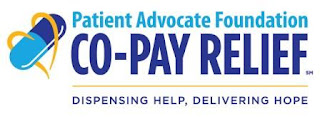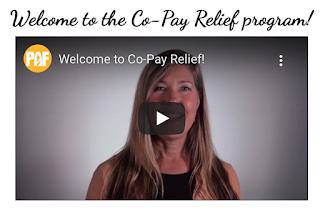By: Brandon M. Macsata, CEO, ADAP Advocacy Association
On March 2, 2021, President Joseph R. Biden announced the United States would have enough Covid-19 vaccines available for every American by the end of May,
[1] thus accelerating by two full months what was already an ambitious plan. The new timeline came, in large part, thanks to the U.S. Food & Drug Administration (FDA) approving yet another vaccine, and recent developments between the Biden Administration and key drug manufacturers. For the HIV-positive community, it represented a glimmer of hope after recent studies suggested
Covid-19 outcomes are worse for people living with HIV.

According to research conducted by James M. Tesoriero, PhD, Carol-Ann E. Swain, PhD, and Jennifer L. Pierce, BS (
et al.) and published earlier this year in
JAMA Network Open, "Persons living with an HIV diagnosis experienced poorer COVID-related outcomes (principally, higher rates of severe disease requiring hospitalization) relative to those without an HIV diagnosis." The
study evaluated the association between HIV diagnosis and Covid-19 diagnosis, hospitalization, and in-hospital death in New York State, which was once seen as the epicenter in the United States.
[2]
The study found New Yorkers living with diagnosed HIV received a diagnosis of Covid-19 at a rate of 27.7 per 1000, compared to only 19.4 per 1000 among persons living without diagnosed HIV. Covid-19 hospitalization rates were also elevated for persons living with diagnosed HIV compared to their counterparts living without diagnosed HIV (8.29 per 1000 vs 3.15 per 1000, respectively). The same elevated risk was true for persons living with diagnosed HIV and a Covid-19 diagnosis and died in the hospital.[3]
The U.S. Department of Health & Human Services (HHS) updated its
Interim Guidance for COVID-19 and Persons with HIV, which reviews special considerations regarding Covid-19 for people with HIV and their health care providers in the United States. In response to the latest research the revised guidelines encourage PLWH to
follow all applicable recommendations of the U.S. Centers for Disease Control and Prevention (CDC), as well as to receive Covid-19 vaccines, regardless of CD4 or viral load.
[4]
For people living with HIV, like many others living with chronic health conditions, gaining access to the Covid-19 vaccine is an entirely different challenge. According to an analysis by the Kaiser Family Foundation (KFF),
states set different Covid-19 vaccination priorities for people with high-risk conditions. Among them, twelve states list HIV as a qualifying condition for early access, while seven states do so without specifying which health conditions are included under immunocompromised state.
[5]
KFF summarized: "Overall, we found that there is wide variation across the country, including in the conditions listed by states, whether these are limited or allow for additional conditions to be considered, and how clearly the information is presented. Some states stick to the CDC’s list exactly, but most do not. It is also quite difficult to locate information. Given the challenges and confusion with vaccine roll-out thus far, this variation and lack of clarity could have significant bearing on the ability of those with high-risk medical conditions, some of whom may be among the most vulnerable, to access the vaccine in early phases."

Pop culture has even weighed-in as "Queer Eye" star Jonathan Van Ness, who is HIV-positive,
urged the HIV-positive community to look up COVID-19 vaccine eligibility. It was a welcomed message to counter the dogmatic idea among certain circles that getting early access to the vaccine implied vulnerability or weakness. "If you’re HIV+ please check your states guidelines to see if you’re eligible and get vaccinated against covid-19," Van Ness pleaded.
[8]
The announcement on the accelerated vaccine timeline by the Biden Administration could very well make it a mute-point. Vaccines will become available sooner to more Americans because the
Pfizer-BioNTech vaccine and
Moderna vaccine are now accompanied by the
Johnson & Johnson vaccine. On the heels of the Johnson & Johnson vaccine approval by the FDA came
news about the historic partnership between the company and its rival, Merck, to support manufacturing of the former’s single-shot Covid-19 vaccine.
[9]
 |
Anthony Fauci, MD
(Photo Source: GettyImages) |
Dr. Anthony Fauci, who is the nation’s top infectious disease expert, urged Americans not to be picky about which Covid-19 vaccine they receive. Fauci's plea came in response to misinformation about the effectiveness of the Johnson & Johnson vaccine. He noted that any direct comparison isn't feasible because the three approved Covid-19 vaccines' clinical trials were conducted during different times, under different circumstances in the United States.[10]
Fauci's message as been echoed by other public health experts, too. The Kaiser Family Foundation explained, "
don’t worry about the numbers." An analysis by KFF's Arthur Allen and Liz Szabo stresses some key points, among them: (1) all three vaccines protect against hospitalization and death; (2) efficacy levels could be a case of apples and oranges; (3) speed is of the essence; (4) some vaccines have different advantages.
[11]
Advocates living with HIV also appear to agree! Murray Penner, Prevention Access Campaign's North America Executive Director, urged his fellow residents of the DMV (also known as the District of Columbia) to get vaccinated, and take advantage of the expanded access for people with underlying health conditions (i.e., HIV). Penner, who participated in Moderna's clinical trials, used Twitter to spread the gospel of getting people vaccinated against Covid-19. The District of Columbia opened its vaccine eligibility on March 1, 2021.

Jen Laws, Board Member of the ADAP Advocacy Association, and HIV/transgender health advocate, addressed the misguided concerns over Johnson & Johnson's vaccine efficacy. Laws said that he kept an eye on data from the FDA's Emergency Use Authorizations (EUAs), and further narrowed his focus to three benchmarks: inhibiting symptom development, morbidity, and transmissibility. Of the current US-approved vaccine products, Johnson & Johnson was the only to include data concerning transmissibility and efficacy against variants *in the application* as opposed to having plans to evaluate in post-market trials. For him, providing data more in alignment with traditional authorization applications absolutely helped ease any of his concerns about the speed of development.
"While I'm excited about the use of mRNA vaccines and adding another tool in our tool-belt, viral vector method (J&J's product) has a longer track record of success as a technology, with minor genetic manipulation of existing vaccines - a 'piggy back' method that I trust my body to respond to better," Laws argued. "Furthermore, Johnson & Johnson also very intentionally included special populations, with 1,218 PLWH in trial phases used for the EUA which is exceptionally meaningful in terms of including us. We're still waiting on data to come back regarding our care metrics specific to HIV status, but it was this mindfulness of a long-term ally in industry that helps build necessary trust."

Building trust in the vaccines is at the center of the efforts by the advocacy community, government agencies, and the medical community. Vaccination hesitancy is now one of the biggest challenges, but progress is being made according to recent polling. Kaiser Family Foundation indicated, "The share that wants to 'wait and see' how the vaccine is working for others before getting vaccinated themselves decreased from 31% in January to 22% in February, while a persistent one in five say they will get the vaccine “only if required for work, school, or other activities” (7%) or will “definitely not” get vaccinated (15%)."[12]
However, specific to the HIV community, Dr. Princy N. Kumar, Professor of Medicine & Microbiology at the Georgetown University School of Medicine, and Chief of the Division of Infectious Diseases and Tropical Medicine, has a message for the remaining vaccine skeptics: "All currently approved Covid-19 vaccines are safe to administer in people living with HIV. For this reason, it's important that people living with HIV get whatever Covid-19 vaccine they are able to get, as soon as they can."
Dr. Kumar points to a study just presented at the Conference of Retroviruses and Opportunistic Infections (CROI) 2021 (Abstract 103), data looking at people living with HIV and solid organ transplant Patients, compared to HIV negative participants showed that in PLWH, once they are infected with Covid-19, had much higher rates of both hospitalizations and the need to be placed on a ventilator. This increased risk of hospitalization for PLWH is especially significant if they have underlying cardiopulmonary disease or renal disease.[13]
As the world marks the one year anniversary of the Covid-19 pandemic tightening its grasp across the globe, it is important to reflect on what can be done to return the world back to 'normal' here in the United States. With the Biden Administration's leadership, it is evident that the country is turning the corner from the debacle leftover from the previous one. Vaccines are an important element of the journey, along with proven public health strategies (i.e., wearing masks, remaining social distant, washing hands). For the HIV-positive community, it is even more important for us to do our collective part to protect ourselves, as well as the people around us. Get your Covid-19 vaccine!
Disclaimer: Guest blogs do not necessarily reflect the views of the ADAP Advocacy Association, but rather they provide a neutral platform whereby the author serves to promote open, honest discussion about public health-related issues and updates.
[1] Brenton Blanchet (2021, March 2). Biden Promises 'Enough Vaccines' for Every American by End of May. Yahoo!News. Retrieved online at https://news.yahoo.com/biden-promises-enough-vaccines-every-230146965.html.
[2] James M. Tesoriero, PhD, Carol-Ann E. Swain, PhD, Jennifer L. Pierce, BS, et al (2021, February 3). COVID-19 Outcomes Among Persons Living With or Without Diagnosed HIV Infection in New York State. JAMA Network Open. Retrieved online at https://jamanetwork.com/journals/jamanetworkopen/fullarticle/2775827.
[3] James M. Tesoriero, PhD, Carol-Ann E. Swain, PhD, Jennifer L. Pierce, BS, et al (2021, February 3). COVID-19 Outcomes Among Persons Living With or Without Diagnosed HIV Infection in New York State. JAMA Network Open. Retrieved online at https://jamanetwork.com/journals/jamanetworkopen/fullarticle/2775827.
[4] HIV.gov (2021, February 26). Guidance for COVID-19 and People with HIV. U.S Department of Health & Human Services. Retrieved online at https://clinicalinfo.hiv.gov/en/guidelines/covid-19-and-persons-hiv-interim-guidance/interim-guidance-covid-19-and-persons-hiv.
[5] Jennifer Kates, Lindsey Dawson, and Jennifer Tolbert (2021, February 16). The Next Phase of Vaccine Distribution: High-Risk Medical Conditions. Kaiser Family Foundation. Retrieved online at https://www.kff.org/policy-watch/the-next-phase-of-vaccine-distribution-high-risk-medical-conditions/.
[6] MaryBeth Musumeci and Priya Chidambaram (2021, March 1). COVID-19 Vaccine Access for People with Disabilities. Kaiser Family Foundation. Retrieved online at https://www.kff.org/medicaid/issue-brief/covid-19-vaccine-access-for-people-with-disabilities/.
[7] Tim Murphy (2021, March 2). Here’s the Latest on COVID-19 Vaccine Priority for People Living With HIV in the U.S. The Body. Retrieved online at https://www.thebody.com/article/hiv-covid-19-coronavirus-vaccine-priority?ic=700100.
[8] Megan Stone (2021, February 24). Jonathan Van Ness urges HIV-positive community to look up COVID-19 vaccine eligibility. Good Morning American. Retrieved online at https://www.goodmorningamerica.com/culture/story/jonathan-van-ness-urges-hiv-positive-community-covid-76085002.
[9] Zacks Equity Research (2021, March 3). Merck (MRK) to Help J&J Make COVID-19 Vaccine to Boost Supply. Yahoo!Finance. Retrieved online at https://finance.yahoo.com/news/merck-mrk-help-j-j-122012149.html.
[10] Sarah Grealish (2021, February 28). Dr Fauci begs Americans NOT to be choosy about Covid vaccines after Johnson & Johnson one shot vax approved. The U.S. Sun. Retrieved online at https://www.the-sun.com/news/2424964/fauci-begs-americans-not-to-be-choosy-about-vaccines/.
[11] Arthur Allen and Liz Szabo (2021, February 28). When Your Chance for a Covid Shot Comes, Don’t Worry About the Numbers. Kaiser Family Foundation. Retrieved online at https://khn.org/news/article/when-your-chance-for-a-covid-shot-comes-dont-worry-about-the-numbers/.
[12] Liz Hamel, Grace Sparks, and Mollyann Brodie (2021, February 26). KFF COVID-19 Vaccine Monitor: February 2021. Kaiser Family Foundation. Retrieved online at https://www.kff.org/coronavirus-covid-19/poll-finding/kff-covid-19-vaccine-monitor-february-2021/.
[13] Princy N. Kumar, MD, FIDSA, MACP. Interview conducted by Brandon M. Macsata on Friday, March 12, 2021.











